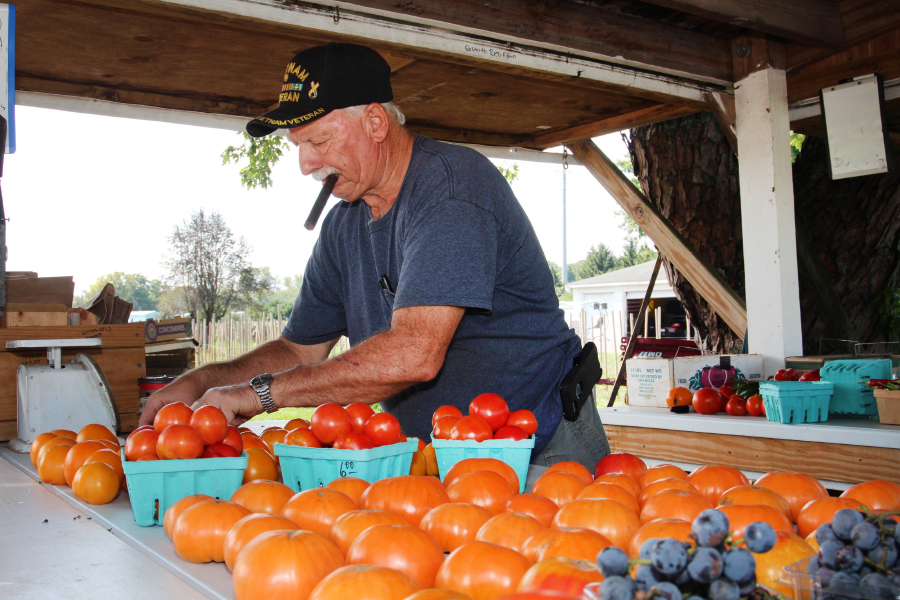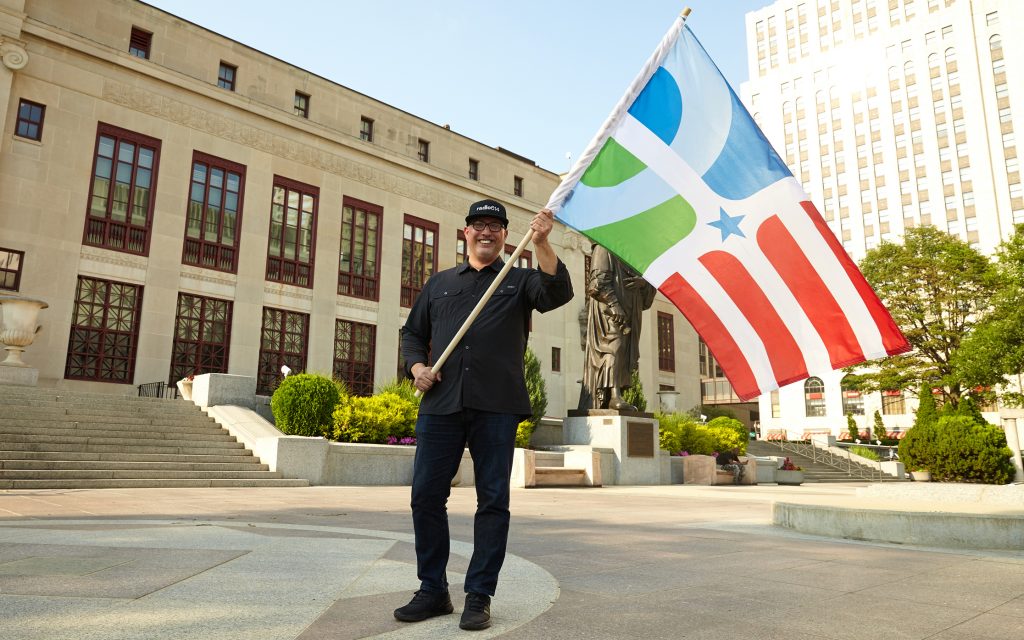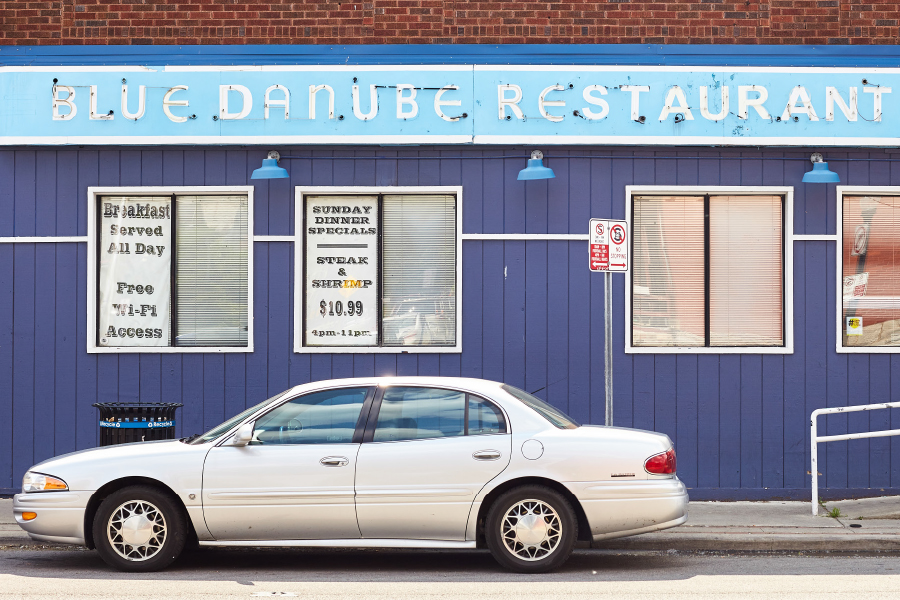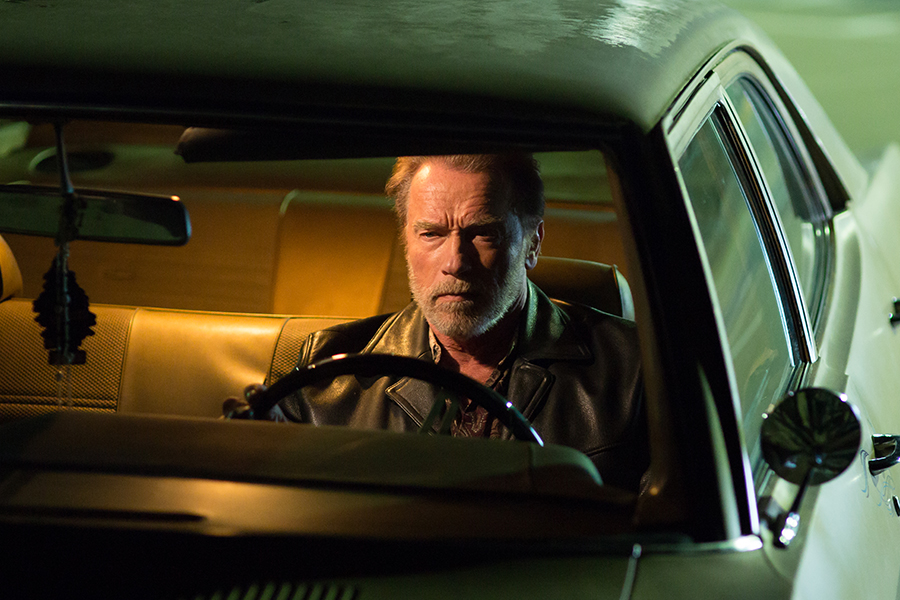Originally published in the October 2018 issue of (614) Magazine

Microgreens are the original petite cuisine. Dainty and delicate atop any dish, served at some of the most revered restaurants in Columbus, the highfalutin alternative to salad or sprouts might have an unlikely source.
Drew Sample supplies a select set of chefs throughout Central Ohio, eager to acquire his premium small-scale produce, from an equally small-scale farm he operates on a tiny lot in North Linden—a neighborhood hardly known as a hotbed of horticulture.
“For me, urban farming really was a political act, it’s showing what you’re about instead of what you’re against,” he explained. “Decentralizing the food system and helping to create a different relationship between people and what they eat is essential.”
An intriguing addition to an otherwise sanguine salad, those diminutive doses of arugula, mustard, and cilantro aren’t meant to make your plate pretty. Microgreens have all of the nutrient density and flavor intensity destined to become a mature plant, just harvested in days or a couple of weeks instead of months.
“They’re more than an upscale garnish, but sometimes folks don’t know where to begin beyond salad. I think burgers are the way to go,” he explained, noting how he tries to help chefs get creative. “They add so much color and texture. My dad surprised me by putting micro-radish on mashed potatoes, it’s peppery. So now I’ve converted several people to microgreens with this photo he sent me of his mashed potatoes.”
Hailing from Toledo, with family roots in Kentucky, Sample returned to Columbus in his late 20s, having spent a stretch of his formative years here from adolescence to early adulthood. But a soul-crushing corporate sales job and suburbia never quite fit his free spirit or sense of purpose.
“I learned something from every job I’ve had that helped me go into business for myself. But most of the time, it seemed like I was just getting paid to deal with irate customers,” he revealed. “I was looking for a business to fall back on and farming was something I knew I could do.”
Sample’s inspiration and knowledge of farming came firsthand from his grandfather, a farmer who left Appalachia looking for the promise of urban life, only to find a different kind of struggle. It’s a work ethic that rubbed off from an early age, and when the opportunity arrived, it was seed money from his grandfather that helped him start Capital City Gardens.
“I harvested yesterday and I’m going to deliver everything today. That’s my edge over bigger companies that charge more for a lower quality product,” he explained. “A lot of farmers charge a delivery fee. I live in the city, so I don’t have to—and if chefs let me know they need something I happen to have, I can add it to the delivery.”
There are no slick brochures or advertising budget. Capital City Gardens is as organic as marketing gets. Clients vary widely, but his business is built almost exclusively on personal referrals, from the Refectory and the Ohio State Faculty Club, to The Guild House, M at Miranova, and Cameron’s American Bistro. A couple of breweries also round out the list, but he’s always looking for customers, with a soft pitch and a smile.
“I picked up The Little Kitchen food truck at a farmers market,” he explained. “I just asked her where she got her microgreens, offered her some of mine, and she started buying.”
Sample originally started by volunteering with a community farm on the south side of the city, harvesting and working the farmers market on the weekends. You’ll still find him lending a hand at the Westgate Farmers Market, even beyond operating his own booth.
“Farmers markets are built on ground-up innovation. For me, it’s easy to just set up and not worry about how to take SNAP. I can just tell people I accept anything you have for food,” he explained. “You go where you’re deserved, not simply where you’re needed. It’s why I’m happy to donate my produce and time to people who hustle and work hard to improve their own communities.”
But once-weekly markets alone weren’t enough to build a business, and by the end of his first summer, economic realities started to set in.
“Last season, most of my income was coming from farmers markets. So when it ended, I was in a lot of trouble,” he admitted, even working at a pizza joint as a side gig while growing his roster of restaurants. Now they’re the majority of his business, and OH Pizza and Brew is a client. “Restaurants have to pick and choose what they buy locally, so I work with chefs to understand what they want before I plant.”
His margins are lower, and so is his surplus, growing just enough to sell or share with family, friends, and neighbors—who’ve all become less suspicious and skeptical of his unlikely grow operation. Spoilage is so low, he doesn’t even bother trying to write it off on his taxes, or carry crop insurance, the safety net standard for most farms. Worms turn what little is left into the next crop of greens.
Capital City Gardens isn’t entirely a one-man operation. Sample still gets his hands dirty, but credits his farm manager Rich Fraztel with allowing him more time to focus on building customer relationships while keeping the growing pains of expansion to a minimum.
“People who go into business for themselves focus too much on the money. Success comes from building relationships,” he opined. “If you take care of your customers, the money will be there. That’s what makes the difference.”
Once the weather worsens, Capital City Gardens transforms exclusively to an indoor endeavor. The converted basement allows for tight control of light, temperature, and humidity with crops on rolling racks rotated for consistent quality and maximum yield. While the rest of the world waits for enough private investment and government subsidies for vertical farming to finally take off, Sample is just making it work by intuition and necessity.
Urban farming isn’t Sample’s only political passion project, nor is his pioneer persona tethered to the terrestrial. He also hosts The Sample Hour, a prolific podcast started on a whim back in 2012 to chronicle the conversations he and his friends were already having on topics profound and obscure. From self-reliance to permaculture, Thomas Sowell to topsoil, it now attracts guest interviews from Mike Michalowicz, former Wall Street Journal small business columnist and folk hero for would-be entrepreneurs everywhere, to Thaddeus Russell, the disavowed academic whose A Renegade History of the United States was published as a response to being tossed off the faculty of Barnard College.
His podcast churns opinions and electrons as easily as he turns the earth, and for the same reason—daring to cultivate something novel in the age of ordinary.
Sample’s pivot from microgreens to macroeconomics comes naturally, an approachable iconoclast who thinks labels are for canned vegetables and rhetoric, not people or ideas. It’s another trait he inherited from his grandfather, who passed away recently, but whose grounding influence and relationship with the land lives on in Capital City Gardens.
“Toward the end, we’d sit and I’d read him excerpts from Wendell Berry I knew he’d appreciate. It was invigorating for both of us,” Sample revealed. “Like any farm, it would be nearly impossible if I couldn’t do it on my own land. He’s the one who allowed me to do this. This is his legacy.” ▩
For more on Sample’s podcast, visit samplehour.com








